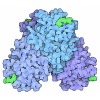| 登録情報 | データベース: PDB / ID: 3rq0
|
|---|
| タイトル | The crystal structure of a glycosyl hydrolases (GH) family protein 16 from Mycobacterium smegmatis str. MC2 155 |
|---|
 要素 要素 | Glycosyl hydrolases family protein 16 |
|---|
 キーワード キーワード | HYDROLASE / structural genomics / PSI-Biology / protein structure initiative / midwest center for structural genomics / MCSG |
|---|
| 機能・相同性 |  機能・相同性情報 機能・相同性情報
hydrolase activity, hydrolyzing O-glycosyl compounds / carbohydrate metabolic process / metal ion binding類似検索 - 分子機能 : / Glycosyl hydrolases family 16 / Glycoside hydrolase family 16 / Glycosyl hydrolases family 16 (GH16) domain profile. / Twin arginine translocation (Tat) signal profile. / Twin-arginine translocation pathway, signal sequence / Jelly Rolls - #200 / Concanavalin A-like lectin/glucanase domain superfamily / Jelly Rolls / Sandwich / Mainly Beta類似検索 - ドメイン・相同性 2,2',2''-NITRILOTRIETHANOL / DI(HYDROXYETHYL)ETHER / PHOSPHATE ION / Glycosyl hydrolases family protein 16類似検索 - 構成要素 |
|---|
| 生物種 |  Mycobacterium smegmatis (バクテリア) Mycobacterium smegmatis (バクテリア) |
|---|
| 手法 |  X線回折 / X線回折 /  シンクロトロン / シンクロトロン /  単波長異常分散 / 解像度: 2.02 Å 単波長異常分散 / 解像度: 2.02 Å |
|---|
 データ登録者 データ登録者 | Tan, K. / Chhor, G. / Bearden, J. / Joachimiak, A. / Midwest Center for Structural Genomics (MCSG) |
|---|
 引用 引用 |  ジャーナル: To be Published ジャーナル: To be Published
タイトル: The crystal structure of a glycosyl hydrolases (GH) family protein 16 from Mycobacterium smegmatis str. MC2 155
著者: Tan, K. / Chhor, G. / Bearden, J. / Joachimiak, A. |
|---|
| 履歴 | | 登録 | 2011年4月27日 | 登録サイト: RCSB / 処理サイト: RCSB |
|---|
| 改定 1.0 | 2011年5月11日 | Provider: repository / タイプ: Initial release |
|---|
| 改定 1.1 | 2011年7月13日 | Group: Version format compliance |
|---|
| 改定 1.2 | 2024年10月9日 | Group: Data collection / Database references ...Data collection / Database references / Derived calculations / Structure summary
カテゴリ: chem_comp_atom / chem_comp_bond ...chem_comp_atom / chem_comp_bond / database_2 / pdbx_entry_details / pdbx_modification_feature / pdbx_struct_conn_angle / struct_conn / struct_ref_seq_dif / struct_site
Item: _database_2.pdbx_DOI / _database_2.pdbx_database_accession ..._database_2.pdbx_DOI / _database_2.pdbx_database_accession / _pdbx_struct_conn_angle.ptnr1_auth_comp_id / _pdbx_struct_conn_angle.ptnr1_auth_seq_id / _pdbx_struct_conn_angle.ptnr1_label_asym_id / _pdbx_struct_conn_angle.ptnr1_label_atom_id / _pdbx_struct_conn_angle.ptnr1_label_comp_id / _pdbx_struct_conn_angle.ptnr1_label_seq_id / _pdbx_struct_conn_angle.ptnr3_auth_comp_id / _pdbx_struct_conn_angle.ptnr3_auth_seq_id / _pdbx_struct_conn_angle.ptnr3_label_asym_id / _pdbx_struct_conn_angle.ptnr3_label_atom_id / _pdbx_struct_conn_angle.ptnr3_label_comp_id / _pdbx_struct_conn_angle.ptnr3_label_seq_id / _pdbx_struct_conn_angle.value / _struct_conn.pdbx_dist_value / _struct_conn.pdbx_leaving_atom_flag / _struct_conn.ptnr1_auth_comp_id / _struct_conn.ptnr1_auth_seq_id / _struct_conn.ptnr1_label_asym_id / _struct_conn.ptnr1_label_atom_id / _struct_conn.ptnr1_label_comp_id / _struct_conn.ptnr1_label_seq_id / _struct_conn.ptnr2_auth_comp_id / _struct_conn.ptnr2_auth_seq_id / _struct_conn.ptnr2_label_asym_id / _struct_conn.ptnr2_label_atom_id / _struct_conn.ptnr2_label_comp_id / _struct_ref_seq_dif.details / _struct_site.pdbx_auth_asym_id / _struct_site.pdbx_auth_comp_id / _struct_site.pdbx_auth_seq_id |
|---|
|
|---|
 データを開く
データを開く 基本情報
基本情報 要素
要素 キーワード
キーワード 機能・相同性情報
機能・相同性情報 Mycobacterium smegmatis (バクテリア)
Mycobacterium smegmatis (バクテリア) X線回折 /
X線回折 /  シンクロトロン /
シンクロトロン /  単波長異常分散 / 解像度: 2.02 Å
単波長異常分散 / 解像度: 2.02 Å  データ登録者
データ登録者 引用
引用 ジャーナル: To be Published
ジャーナル: To be Published 構造の表示
構造の表示 Molmil
Molmil Jmol/JSmol
Jmol/JSmol ダウンロードとリンク
ダウンロードとリンク ダウンロード
ダウンロード 3rq0.cif.gz
3rq0.cif.gz PDBx/mmCIF形式
PDBx/mmCIF形式 pdb3rq0.ent.gz
pdb3rq0.ent.gz PDB形式
PDB形式 3rq0.json.gz
3rq0.json.gz PDBx/mmJSON形式
PDBx/mmJSON形式 その他のダウンロード
その他のダウンロード 3rq0_validation.pdf.gz
3rq0_validation.pdf.gz wwPDB検証レポート
wwPDB検証レポート 3rq0_full_validation.pdf.gz
3rq0_full_validation.pdf.gz 3rq0_validation.xml.gz
3rq0_validation.xml.gz 3rq0_validation.cif.gz
3rq0_validation.cif.gz https://data.pdbj.org/pub/pdb/validation_reports/rq/3rq0
https://data.pdbj.org/pub/pdb/validation_reports/rq/3rq0 ftp://data.pdbj.org/pub/pdb/validation_reports/rq/3rq0
ftp://data.pdbj.org/pub/pdb/validation_reports/rq/3rq0 リンク
リンク 集合体
集合体
 要素
要素 Mycobacterium smegmatis (バクテリア)
Mycobacterium smegmatis (バクテリア)


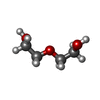
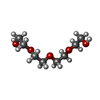









 X線回折 / 使用した結晶の数: 1
X線回折 / 使用した結晶の数: 1  試料調製
試料調製 シンクロトロン / サイト:
シンクロトロン / サイト:  APS
APS  / ビームライン: 19-ID / 波長: 0.97915 Å
/ ビームライン: 19-ID / 波長: 0.97915 Å 解析
解析 単波長異常分散 / 解像度: 2.02→41.514 Å / SU ML: 0.2 / σ(F): 0 / σ(I): 0 / 位相誤差: 18.86 / 立体化学のターゲット値: ML
単波長異常分散 / 解像度: 2.02→41.514 Å / SU ML: 0.2 / σ(F): 0 / σ(I): 0 / 位相誤差: 18.86 / 立体化学のターゲット値: ML ムービー
ムービー コントローラー
コントローラー









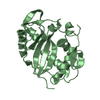


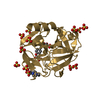
 PDBj
PDBj